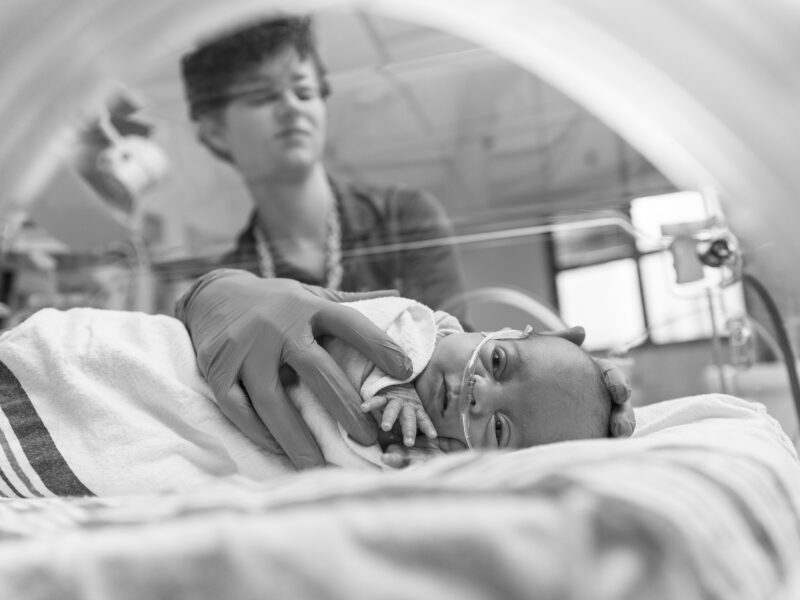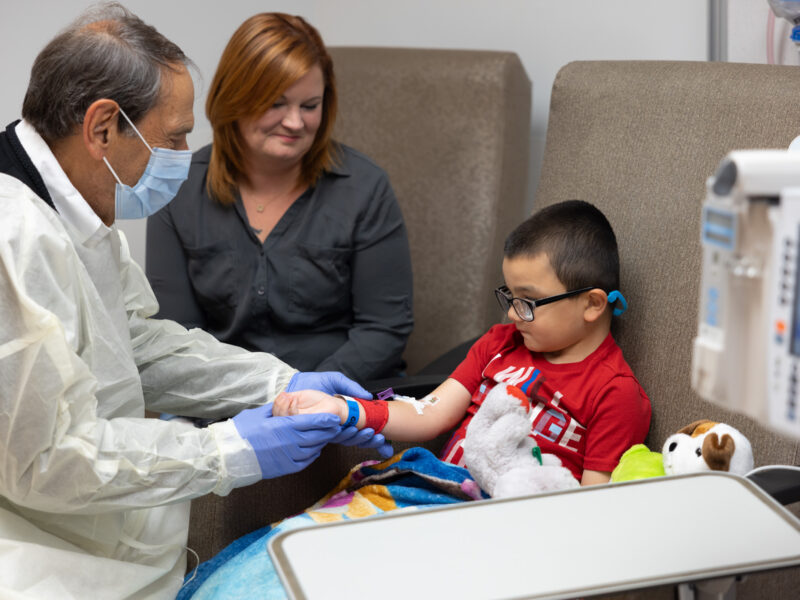The Journey to a Program Project Grant
The Journey to a Program Project Grant https://pediatricsnationwide.org/wp-content/uploads/2016/04/Program-Project-Grant-Header-1024x575.jpg 1024 575 Tiasha Letostak, PhD Tiasha Letostak, PhD https://pediatricsnationwide.org/wp-content/uploads/2021/03/Tiasha-Letostak.jpg- April 28, 2016
- Tiasha Letostak, PhD

Recommendations from a multi-institutional research team who persevered to obtain a P01 to develop a vaccine for RSV.
In 2015, the National Institute of Allergy and Infectious Diseases (NIAID) awarded a $6.75 million program project grant to Mark Peeples, PhD, Octavio Ramilo, MD, and M. Asuncion Mejias, MD, PhD, all principal investigators in the Center for Vaccines and Immunity at The Research Institute at Nationwide Children’s Hospital.
Unbeknownst to the public, however, the acquisition of this funding was a multifaceted endeavor that involved connecting with research experts from multiple institutions and persevering through three consecutive years of grant submissions.
According to Dr. Peeples and colleagues, successful P01 submissions have a number of critical, shared characteristics.
“In addition to innovatively tackling a clinically significant topic, our team’s broad spectrum of expertise was a strong contributor to success,” explains Dr. Ramilo, who is also chief of Infectious Diseases at Nationwide Children’s and a professor of Pediatrics at Ohio State. “After working together on a variety of projects throughout the years, we developed a history of collaboration and were able to get all the right people together in the same location to meet periodically.”
The precipitating event was a 2010 meeting of investigators from the Center for Vaccines and Immunity who were interested in respiratory syncytial virus (RSV).
“Dr. Ramilo was understandably frustrated with the lack of a vaccine for the overwhelming number of RSV patients at our hospital,” says Dr. Peeples. “But he was unaware of the obstacles in terms of what it takes to develop a protective immune response, so I shared my personal insights.”
By the end of that initial meeting, Drs. Ramilo and Peeples had identified five problems, potential solutions for each and rough outlines of projects to reach these solutions. Dr. Mejias was also on board and convinced that it was the way to proceed, but the three-person team needed additional collaborators to fill the gaps of their expertise.
Their search for colleagues led them to include Jianrong Li, DVM, PhD, and Stefan Niewiesk, DVM, PhD, both from Ohio State’s School of Veterinary Medicine, as well as Michael Teng, PhD, from the University of South Florida. Two decades earlier, Dr. Teng had been an NIAID postdoc in the same lab where Dr. Peeples was on sabbatical.
“Our expanded team began meeting every two months, Skyping in Dr. Teng, to discuss how to demonstrate feasibility for all our projects,” explains Dr. Peeples. “And by sharing progress toward those goals, we built momentum with each meeting.”
In early 2013, they began discussions with their Program Officer at NIAID. By the summer of 2013, they submitted an extensive Letter of Intent which needed to be, and was, approved by NIAID. Ten weeks later, they submitted their first P01 grant application.
Although the first submission received a respectable score, it was not sufficient for funding.
The team continued to troubleshoot how to improve their impact scores, from leveraging commonalities in their research projects to generating additional data to boost the strength of their resubmissions. As a backup, Dr. Teng also submitted his project as an R01 at the same time as the P01 submissions.
“Our second submission a year later was greatly improved and received an excellent score,” says Dr. Ramilo. “As our team was preparing for a third and final submission in the fall of 2015, we were unexpectedly awarded the grant from funds remaining at the end of the fiscal year.”
“We were very happy to accept the award, even though it was for less than we had hoped,” says Dr. Niewiesk, who is a professor in the Department of Veterinary Biosciences at Ohio State. “We’re now working to partner with big pharma, because we need help to move as fast as possible into animal model studies and clinical trials.”
“Our goal is to develop a live, attenuated virus for RSV that can be given as nose drops to infants,” adds Dr. Mejias, who is also an infectious diseases specialist and an associate professor of Pediatrics at Ohio State. “We also hope to improve production efficiency of the vaccine and develop new methods to evaluate its safety and effectiveness.”

Guidance for Preparing a Multiproject Research Application
According to the National Institutes of Health, a program project grant or P01 features the following five features:
- At least two interrelated research projects related to a theme, with each capable of standing on its own scientific merit but complementing one another.
- Collaboration and interaction among projects and investigators to achieve a common goal.
- Synergy among projects.
- One grantee institution that will be legally and financially responsible for the use of funds.
- Support as needed for shared resources — core resources or facilities — that provide services or resources to at least two research projects.
Photo Credit: Adobe Stock (arrows); Nationwide Children’s (portrait)
About the author
Tiasha is the senior strategist for Clinical & Research Communications at Nationwide Children's Hospital. She provides assistance to investigators in The Research Institute and clinician-scientists at Nationwide Children’s for internal and external communication of clinical studies, peer-reviewed journal articles, grant awards and research news. She is also the editor-in-chief for Research Now, Nationwide Children's monthly, all-employee e-newsletter for research, as well as a writer for Pediatrics Nationwide.
-
Tiasha Letostak, PhDhttps://pediatricsnationwide.org/author/tiasha-letostak-phd/
-
Tiasha Letostak, PhDhttps://pediatricsnationwide.org/author/tiasha-letostak-phd/
-
Tiasha Letostak, PhDhttps://pediatricsnationwide.org/author/tiasha-letostak-phd/July 14, 2014
-
Tiasha Letostak, PhDhttps://pediatricsnationwide.org/author/tiasha-letostak-phd/September 3, 2014







